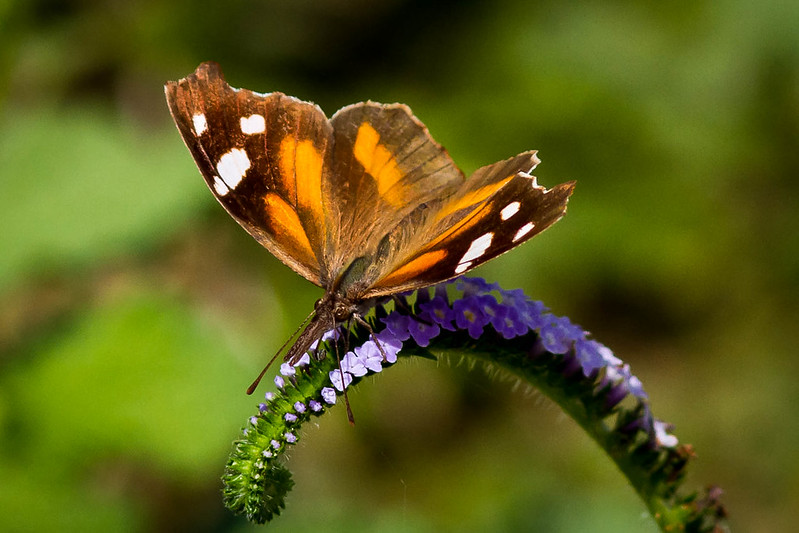In established aquaponics systems, plants and microorganisms form a complex symbiosis that represents the core of the closed-loop cycle. This article examines the practical aspects of this interdependence.

Plant Selection for Optimal Loop Stability
Plant selection is based on nutrient requirements, root systems, and growth speed:
Heavy Feeders with Filter Function
Pak Choi (Brassica rapa subsp. chinensis) is particularly suitable due to its high nitrate absorption capacity. The shallow root systems are suitable for NFT systems (Nutrient Film Technique).
Water Spinach (Ipomoea aquatica) shows particularly efficient heavy metal binding in studies and is suitable for systems with higher fish stocking density.
Medium Feeders for Deep Beds
Black Salsify (Scorzonera hispanica) develops deep taproots that transport oxygen to deeper substrate layers, thereby preventing anaerobic zones.
Horseradish (Armoracia rusticana) shows antimicrobial effects against pathogenic germs in the water, especially at higher water temperatures.
Microbial Control in Practical Operation
Microbial colonization is specifically controlled through substrate choice, aeration, and plant combination:
Nitrification Cascades in Different System Components
In practical aquaponics systems, nitrification occurs not only in the biofilter but is distributed across several components:
- Plant root systems: Colonization with nitrifying bacteria (Nitrosomonas, Nitrobacter) and heterotrophic bacteria that break down organic complexes.
- Specialty substrates: Lava granules with high specific surface area (≥ 300 m²/m³) provide colonization area for microorganisms.
- Pipes and tank walls: Biofilm formation with varying bacterial composition depending on flow velocity.
Microbiological Water Analysis
Practical monitoring of microbial populations:
- Redox potential measurement as an indicator of microbiological activity (optimal: 250-350 mV)
- Microscopic inspection of biofilm samples every 4-6 weeks
- Observation of sludge formation: Too little formation indicates insufficient microbiological breakdown
Disruptions in Microbial Balance
Practical problem indicators and countermeasures:
- Slimy biofilms: Often a sign of predominantly heterotrophic bacteria – increase aeration, reduce organic load.
- Odor development: Indication of anaerobic zones – mix substrate, optimize flow.
- pH drop below 6.0: Nitrification stalls – targeted addition of calcium carbonate.
Practical Nutrient Management
The balance between fish stock, plant quantity, and nutrient availability requires continuous adjustment:
Key Figures for Practice
| Parameter | Optimal Range | Measurement Interval | Corrective Measures for Deviation |
|---|---|---|---|
| Ammonium (NH₄⁺) | < 0.5 mg/l | Daily | Reduce feed amount, increase plant proportion |
| Nitrite (NO₂⁻) | < 1.0 mg/l | 2x weekly | Water change (10-15%), increase aeration |
| Nitrate (NO₃⁻) | 5-50 mg/l | Weekly | If too low: increase fish stock; If too high: increase plant proportion |
| pH Value | 6.5-7.0 | Daily | If decreasing: add calcium carbonate |
Practically Tested Plant Combinations
Experiences from systems recommend the following plant communities:
Herb Mixed Culture
Vietnamese Coriander (Persicaria odorata) with Thai Basil (Ocimum basilicum var. thyrsiflora) and Vietnamese Mint (Persicaria odorata).
This combination shows synergistic effects against pathogens and improves nutrient uptake from the water.
Vegetable Bed with Depth Effect
Horseradish (Armoracia rusticana) as a deep-rooter combined with New Zealand Spinach (Tetragonia tetragonioides) as a shallow-rooter.
Horseradish loosens the substrate through its root system and improves oxygen supply.
Shade-Tolerant Mixed Culture
Sweet Potato (Ipomoea batatas) as a climbing surface planting with Watercress (Nasturtium officinale) in the partially shaded area.
The sweet potato naturally shades the system and reduces algae growth.
Practical Tip: Crop Rotation
Establish a rotation system where approximately 30% of the planting is changed every 8-10 weeks. This prevents the depletion of specific nutrients in the water and reduces susceptibility to specialized pathogens.
Context:



Add Comment